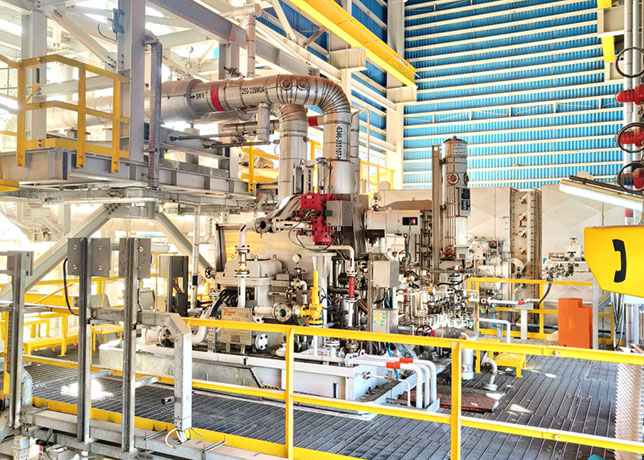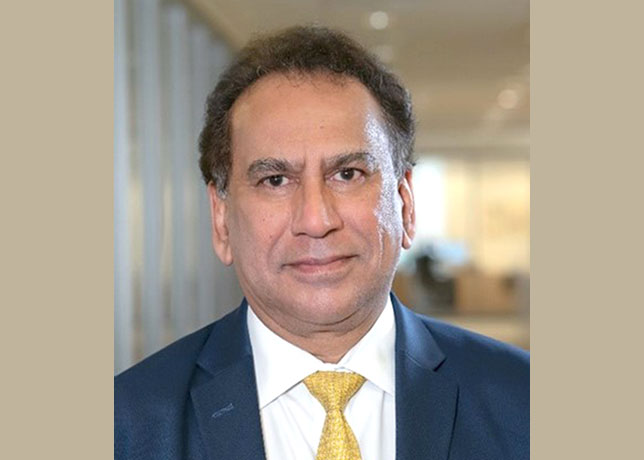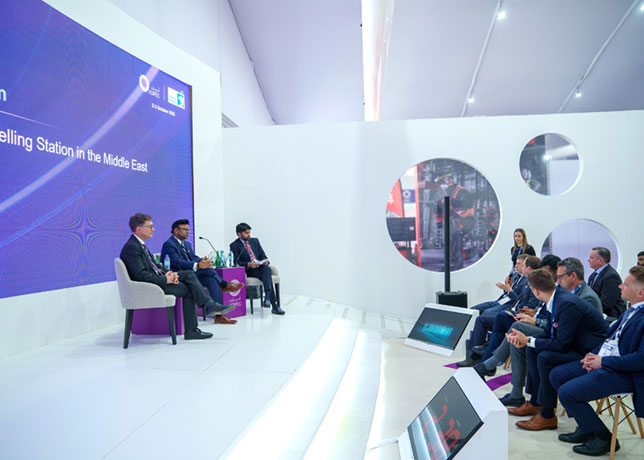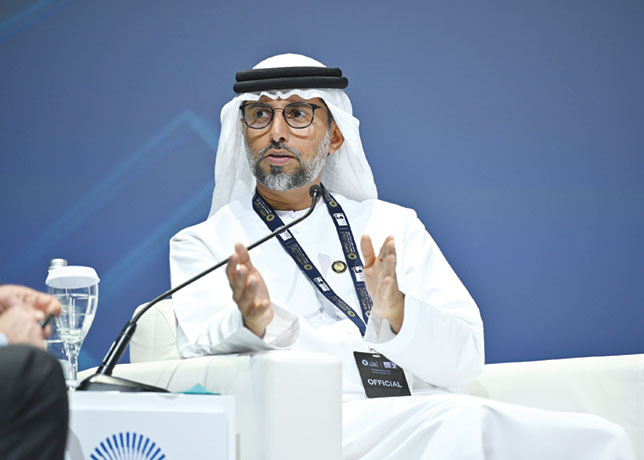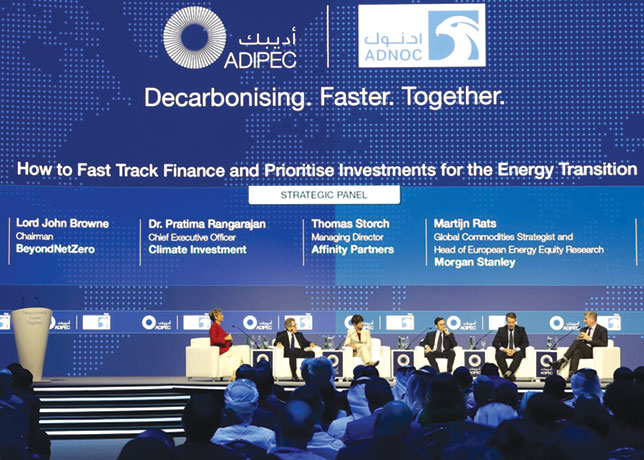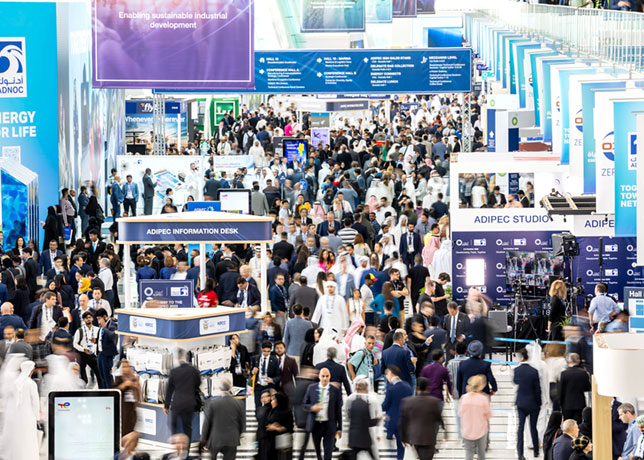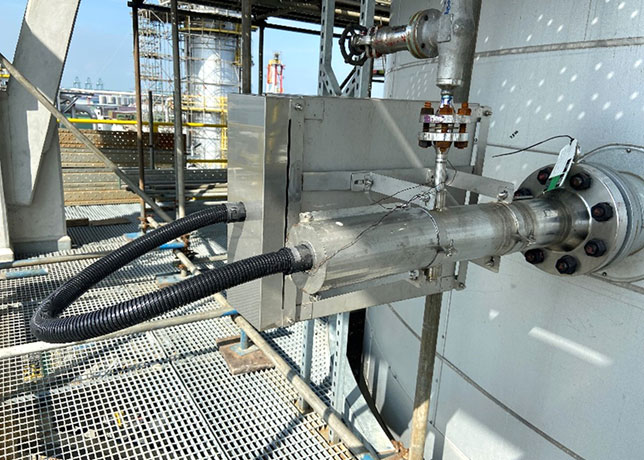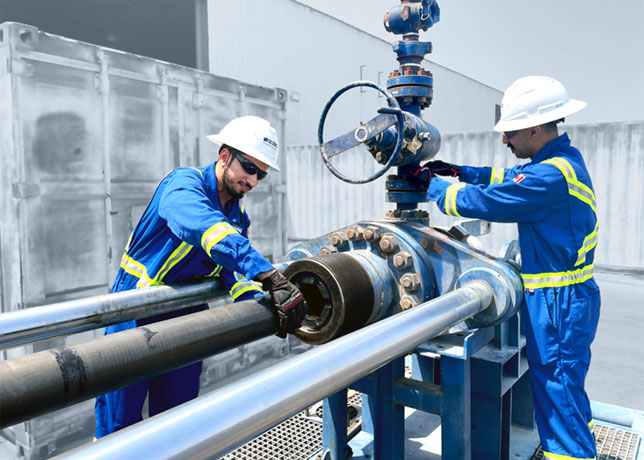
 Frank Janssens
Frank Janssens
As green hydrogen emerges as a cornerstone for low-carbon energy, precise measurement and standardisation are vital for driving investment, fostering innovation, and achieving global net-zero targets by 2030, Frank Janssens tells OGN
With sustainability firmly anchored in the Middle East’s strategic ambitions and beyond, we are at a crucial juncture where green hydrogen is emerging as a cornerstone in our pursuit of low-carbon energy solutions.
"As we approach 2030, the role of precise measurement and standardisation in this sector is critical not just for technical accuracy but also for accelerating business impact, investment attraction, and fostering international collaboration," Frank Janssens, Vice-President of Sales and Managing Director of KROHNE Solutions, tells OGN energy magazine.
Green hydrogen, produced through the electrolysis of water powered by renewable energy, is inherently free from carbon emissions, making it indispensable to achieving global net-zero targets.
This clean energy source is incredibly versatile, finding applications in transportation, industrial processes, and energy storage.
For the Middle East, aligning these applications with visionary frameworks like Saudi Vision 2030 and the UAE’s ambitious clean energy goals is essential in transforming the region into a global hub for sustainable development.
THE ROLE OF MEASUREMENT & STANDARDISATION
 |
Measurement and standardisation will significantly influence the scalability of green hydrogen |
In the evolving landscape of green hydrogen, measurement and standardisation are more than just technical requirements; they are strategic enablers of growth, innovation, and global collaboration.
This focus will be a recurring theme at major industry gatherings, such as ADIPEC 2024, as well as in broader sustainability dialogues under the Alliance for Industry Decarbonisation and campaigns like the United Nations Global Compact’s #ForwardFaster initiative.
Safety is paramount when dealing with hydrogen due to its flammability and storage challenges.
Standardised measurement protocols are critical in assessing hydrogen's purity, pressure, and quality, significantly reducing the risks of leaks or accidents.
Organisations like the International Organisation for Standardisation (ISO) and the International Electrotechnical Commission (IEC) provide the guidelines that govern these processes.
By ensuring that we adhere to these stringent standards, we foster stakeholder trust and reinforce the credibility of green hydrogen as a safe and reliable energy alternative a message that will resonate strongly at events like ADIPEC and the World Future Energy Summit.
For green hydrogen to achieve its potential as a global commodity, the harmonisation of measurement and certification standards across different regions is essential.
This alignment supports the vision outlined in Saudi Vision 2030, aiming to transform the Kingdom into a leader in renewable energy and clean technologies.
Establishing a unified set of standards not only facilitates international trade but also drives economies of scale, ultimately reducing production costs and speeding up the adoption of green hydrogen technologies.
This strategic focus on standardisation is a driving force behind the United Nations Global Compact’s #ForwardFaster campaign, encouraging industries worldwide to align their decarbonisation efforts with shared global goals.
Standardisation acts as a catalyst for innovation by creating a level playing field where companies can develop and refine their technologies with clear benchmarks.
Consistent measurement protocols allow researchers and industry leaders to validate their findings, accelerating technological advancements in green hydrogen production, storage, and application.
Platforms like the Alliance for Industry Decarbonisation are pivotal in creating these frameworks, enabling businesses to share best practices and collaborate on innovative solutions that are scalable and globally applicable.
STRATEGIC PATHWAYS TO 2030 & BEYOND
As we navigate toward 2030, our focus on measurement and standardisation will significantly influence the scalability and integration of green hydrogen into mainstream energy markets. But what are some key areas where these principles will drive tangible business impact?
Investment in green hydrogen infrastructure is a fundamental pillar of scaling its adoption. By leveraging standardised metrics such as the levelised cost of hydrogen (LCOH), investors gain clear insights into the performance expectations and economic viability of projects.
This clarity is critical for guiding investments in a way that aligns with the ambitious decarbonisation targets set out in Saudi Vision 2030 and global initiatives like the United Nations Global Compact’s #ForwardFaster campaign, which emphasises the urgency of accelerating climate action.
Green hydrogen’s potential to revolutionise sectors from transportation to heavy industry is contingent on the consistency and accuracy of its measurement standards.
For industries aiming to meet their decarbonisation targets, these benchmarks are essential for evaluating progress and making informed decisions about energy transitions.
Landmark sustainability events such as the World Green Economy Summit in Dubai provide a global stage for sharing these achievements, underscoring how measurement technologies can act as catalysts for large-scale industrial transformation.
Effective international collaboration is fundamental for establishing green hydrogen as a globally accepted energy source.
Platforms like the International Renewable Energy Agency (IRENA) and initiatives led by the Alliance for Industry Decarbonisation foster cross-border cooperation, enabling countries to align their policies and technologies with global standards.
By integrating these best practices into regional strategies like Saudi Vision 2030, we create a unified approach that stimulates innovation, attracts investment, and enhances the competitiveness of green hydrogen on a global scale.
While the promise of green hydrogen is substantial, there are several challenges that must be addressed to fully realise its potential.
Diverse regulatory frameworks can pose significant obstacles to the widespread adoption of green hydrogen.
Creating a cohesive set of standards that accommodates local nuances while aligning with global best practices is crucial.
This harmonisation will be a focal point in dialogues at ADIPEC and other industry gatherings, where stakeholders work towards bridging regulatory gaps.
From production efficiency to storage and distribution logistics, technical challenges remain a significant hurdle.
Standardised measurements will provide the foundation for consistent evaluations, enabling breakthroughs in overcoming these obstacles.
Moreover, establishing economic viability through clear cost metrics will be key to attracting sustained investment, ensuring that green hydrogen remains a financially competitive alternative in the evolving energy landscape.
MEASURING THE FULL POTENTIAL OF GREEN HYDROGEN
As we look toward 2030 and beyond, the green hydrogen sector stands at the forefront of the global energy transition.
Measurement and standardisation are not merely technical requirements; they are strategic imperatives that will determine the sector’s growth, innovation potential, and market impact.
The focus on these principles, emphasised through initiatives like the Alliance for Industry Decarbonisation and the United Nations Global Compact’s #ForwardFaster campaign, will be crucial in turning ambitious sustainability goals into concrete realities. By investing in robust measurement frameworks, fostering international cooperation, and aligning our regional strategies with global standards, we can unlock the full potential of green hydrogen.
"Here at KROHNE, we firmly believe that our collective commitment to these principles will shape a more sustainable, economically resilient future for the region, positioning the Middle East as one of the changemakers and global leaders in the green hydrogen revolution," Janssens concludes.





















































































